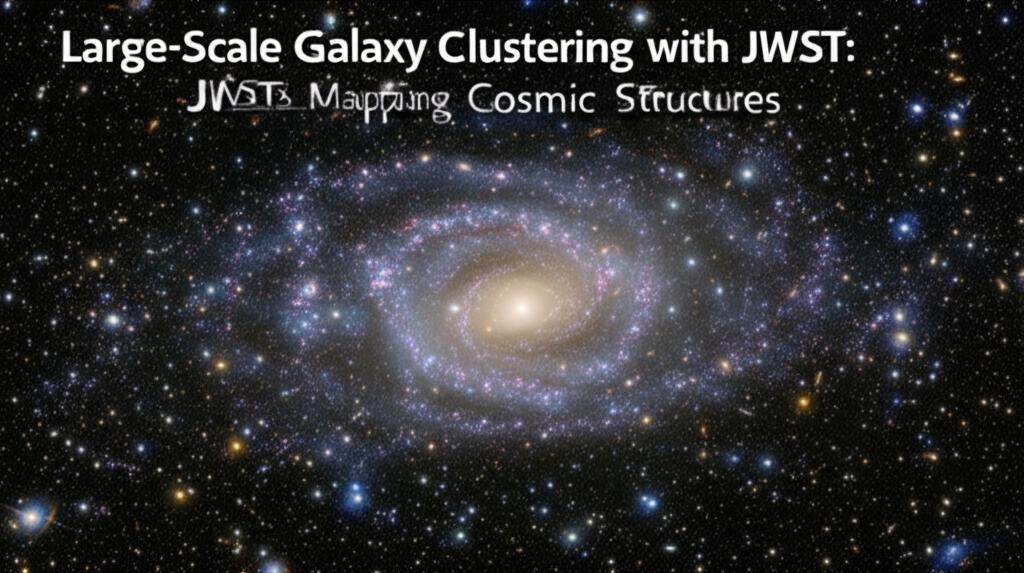The James Webb Space Telescope (JWST) is revolutionizing our understanding of the early universe, providing unprecedented insights into how the first galaxies formed and assembled into the large-scale cosmic structures we observe today. Its advanced infrared capabilities allow astronomers to peer further back in time and with greater clarity than ever before, unveiling the nascent universe in remarkable detail.
Recent findings from JWST's COSMOS-Web survey, the largest and deepest survey of galaxy groups undertaken by the telescope, are significantly advancing the field. Astronomers have compiled a vast catalog of nearly 1,700 galaxy groups, some dating back to when the universe was less than 12% of its current age, or over 12 billion years ago. This extensive census allows researchers to trace the evolution of these cosmic families across a 12 billion-year timeline, offering a continuous record of how large-scale structures formed and evolved.
These observations are crucial because most galaxies, including our own Milky Way, reside within galaxy groups. The interactions and environment within these groups play a significant role in galaxy evolution, influencing everything from star formation rates to the growth of supermassive black holes. The COSMOS-Web data is revealing the early signatures of the cosmic web – vast filamentary structures and overdensities of matter – emerging just a few billion years after the Big Bang. Researchers are observing enhanced star formation and early morphological transformations in galaxies within these young groups, indicating that environmental influences were at play even at these early cosmic epochs.
Using powerful instruments like the Near-Infrared Camera (NIRCam) and the Mid-Infrared Instrument (MIRI), COSMOS-Web is mapping a significant patch of the sky, about the area of three full Moons. The survey aims to discover thousands of galaxies in the Epoch of Reionization (roughly 6 to 11 billion years after the Big Bang), map the spatial distribution of reionization, and identify rare quiescent galaxies at high redshifts. It will also help measure the evolution of the stellar-mass-to-halo-mass relation using weak gravitational lensing. The exquisite resolution of JWST allows astronomers to distinguish previously blended sources, leading to more accurate photometric measurements and a better understanding of galaxy properties.
Beyond identifying distant galaxy groups, JWST is also shedding light on the formation of incredibly dense and bright star clusters within these early galaxies. Simulations based on JWST observations suggest that these massive star clusters could have formed rapidly through the fragmentation of gas-rich galactic disks in the chaotic aftermath of galaxy mergers.
Furthermore, JWST's ability to perform detailed spectroscopic analysis is confirming the high abundance of galaxies and Active Galactic Nuclei (AGN) at very high redshifts (z ≈ 9–11). These findings are prompting revisions to theoretical models of early galaxy formation, suggesting that processes like higher star-formation efficiency or lower dust extinction might have played a more significant role than previously thought. Spectroscopic observations are also crucial for identifying proto-clusters and filament-like structures at these early times, providing direct evidence of the assembly of the cosmic web.
In specific cases, like the Phoenix galaxy cluster, JWST observations have solved long-standing mysteries. By mapping the "missing" warm gas in the cluster's core, Webb has provided a complete picture of the cooling process that fuels its surprisingly high rate of star formation, a phenomenon usually seen in younger galaxies.
The wealth of data coming from JWST, including stunning deep-field images revealing a "visual feast of galaxies," is not only breaking records but also laying the groundwork for decades of future research into the life cycles of galaxies and the grand architecture of the cosmos. These observations are refining our measurements of dark matter halos around galaxies and deepening our understanding of the forces that drive cosmic expansion and govern the dynamics of galactic structures on the largest scales. As more data is analyzed and released, astronomers anticipate further groundbreaking discoveries that will continue to reshape our understanding of cosmic history.

